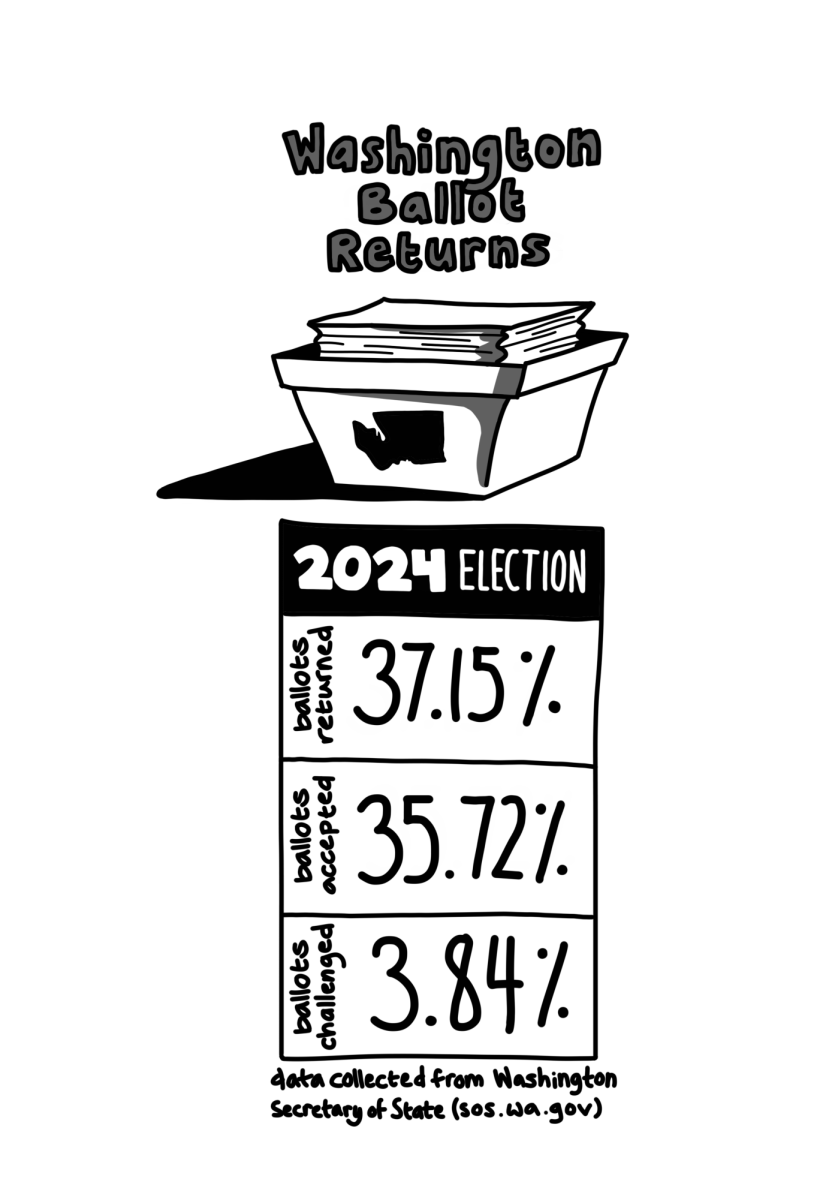
Seven dollars and 42 cents is the average cost of a meal purchased with flex dollars in a Whitman dining hall. But for students on Meal Plan A, the default plan for first-years and sophomores, the average price is $13.13: 77 percent higher. With tuition on the rise, Whitman students disagree on the extent to which Bon Appétit’s pricing plans are economical considering the relative cheapness of food purchased with flex dollars to meals purchased through a meal plan.
Most first-years and sophomores are required to purchase one of Bon Appétit’s five meal plan options. The average price of meals on various plans ranges from $7.58 per meal on Plan C to $13.13 per meal on Plan A, excluding flex dollars, which are included in the cost of certain plans. This inflated price is in part explained by the one-third of the cost of meal plans that goes to the college to pay for employees, utilities, kitchen maintenance and other costs. Flex dollars purchased outside of a meal plan are not subject to those costs.
Regardless, the fact that Bon Appétit charges less for dining hall meals purchased with flex dollars than it does for meals purchased on a meal plan is a policy many students disagree with.
“Flex dollar price in the dining halls is a discounted amount that is set lower to be an incentive to juniors and seniors who have already lived on campus for two years to come back and eat in the dining halls,” said Roger Edens, general manager of Bon Appétit.
For upperclassmen like senior Allison Armstrong, purchasing flex dollars in place of a meal plan is an attractive option. However, she believes that the price of meals in dining halls seems appropriate considering the service it provides.
“I certainly think the flex price is reasonable,” Armstrong said. “I do think Bon Appétit meals are overpriced, but rightly so. Yes, they are overpriced for the amount that you would eat in that single meal, but I think you are also paying for the options and the service.”
First-year Lillian Bailey, who is on Meal Plan A, echoed Armstrong’s opinion. She commented that students are paying for more than the cost of meals when they purchase a meal plan.
“I think part of what you’re paying for when you’re eating at Bon Appétit is convenience,” said Bailey. “It might be a little bit of a steep price to pay, but I feel like there’s value in that.”
Bailey did note, however, that the average price of meals can seem uneconomical when students don’t eat large meals.
“Sometimes I think [the price of meals] is slightly unreasonable when all I want to get is a bagel,” Bailey said.
Likewise, other students questioned whether Bon Appétit’s meal plans are fairly priced.
“Is the food we get worth the price we pay?” asked sophomore Adam Delgado. “I wish [Bon Appétit’s meal plans] were more comprehensive based on need and how often you eat . . . [we need] a less expensive meal plans with fewer meals.”
Senior Laura Niman, who is on a flex plan and often eats at Café 66, believes that Bon Appétit’s pricing plan is often unfair for students because it fails to take into account differences in individual’s eating habits.
“I think the thing about eating in the dining hall is that it’s expensive because they’re accounting for people in the dining hall that eat a lot of food because it’s all-you-can eat, or for people that take five pieces of fruit out,” Niman said. “And so the people who just have a sandwich are paying $12 for a sandwich.”
Junior Matt Coleman agreed with Niman.
“I don’t know if [Bon Appétit’s meal plans] are a rip-off,” Coleman said, “but I get sandwiches [at Café 66] sometimes and it’s a lot cheaper than if I got a sandwich at the dining hall. If you go to the dining hall and just want a salad, then you’re paying like $12 for a salad, whereas if you come to Café 66 you can get a pre-packaged salad for $4.”
In response to students who share Coleman’s concerns, Edens argues that the higher price of meals offered in dining halls is reasonable because it incorporates the cost of maintaining the large number of dining facilities on campus.
“The duplicated facilities really increase the overall cost of the Whitman dining program,” said Edens. “Whitman has far more dining facilities than nearly all other colleges its size. While it is very desirable to have a dining facility close to your residence hall a separate full retail café and two espresso bars, it is expensive and this impacts the cost of meal plans.”
Whitman’s standard meal plan price of $2,600 per semester is middle of the line compared to nearby Bon Appétit operations at Reed College and Lewis and Clark College. Prices at those colleges are $2,700 and $2,217 per semester, respectively.
Edens added that the high cost of Bon Appétit meals plans is determined by other factors besides the cost of maintaining facilities.
“[Costs] depend on such factors as how many students are on meal plans, how many facilities and how many people it takes to run those facilities, the existence of a summer quarter and the extent of summer conferences,” he said. “If it is possible to spread fixed costs between more students or non-student sources: summer conferences, on campus and off campus catering: the less expensive a meal plan can be.”
Peter Harvey, Whitman treasurer and chief financial officer, echoed Eden’s explanation, but notes that Bon Appétit is a private entity that ideally seeks to garner a five percent profit per year for services provided.
In the end, pricing for student expenses is determined by the Board of Trustees and not by Bon Appétit, said Edens.
Robert Crenshaw contributed reporting.







